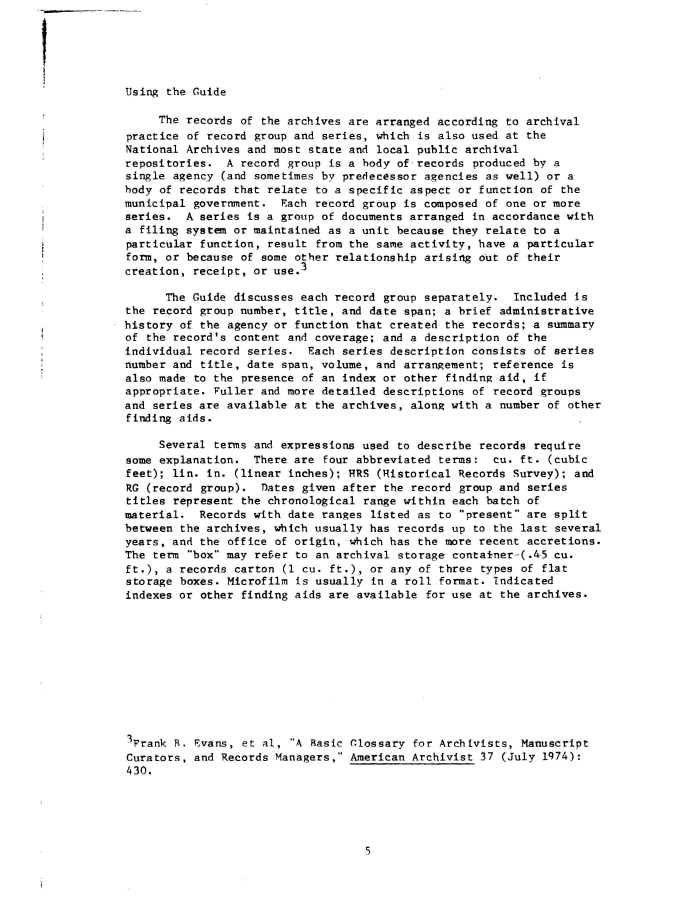|
Using the Guide
The records of the archives are arranged according to archival
practice of record group and series, which is also used at the
National Archives and most state and local public archival
repositories. A record group is a body of records produced by a
single agency (and sometimes by predecessor agencies as well) or a
body of records that relate to a specific aspect or function of the
municipal government. Each record group is composed of one or more
series. A series is a group of documents arranged in accordance with
a filing system or maintained as a unit because they relate to a
particular function, result from the same activity, have a particular
form, or because of some other relationship arising out of their
creation, receipt, or use.
The Guide discusses each record group separately. Included is
the record group number, title, and date span; a brief administrative
history of the agency or function that created the records; a summary
of the record's content and coverage; and a description of the
individual record series. Each series description consists of series
number and title, date span, volume, and arrangement; reference is
also made to the presence of an index or other finding aid, if
appropriate. Fuller and more detailed descriptions of record groups
and series are available at the archives, along with a number of other
finding aids.
Several terms and expressions used to describe records require
some explanation. There are four abbreviated terms: cu. ft. (cubic
feet); lin. in. (linear inches); HRS (Historical Records Survey); and
RG (record group). Dates given after the record group and series
titles represent the chronological range within each batch of
material. Records with date ranges listed as to "present" are split
between the archives, which usually has records up to the last several
years, and the office of origin, which has the more recent accretions.
The terra "box" may refer to an archival storage container-(.4-5 cu.
ft.), a records carton (1 cu. ft.), or any of three types of flat
storage boxes. Microfilm is usually in a roll format. Indicated
indexes or other finding aids are available for use at the archives.
o
Frank R. Evans, et al, "A Basic Glossary for Archivists, Manuscript
Curators, and Records Managers," American Archivist 37 (July 1974):
430.
|

